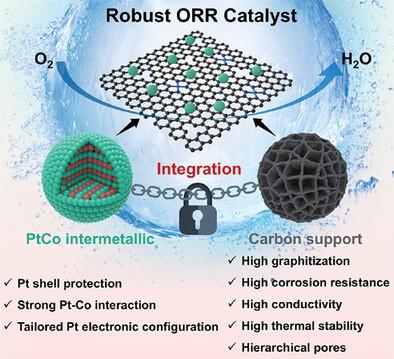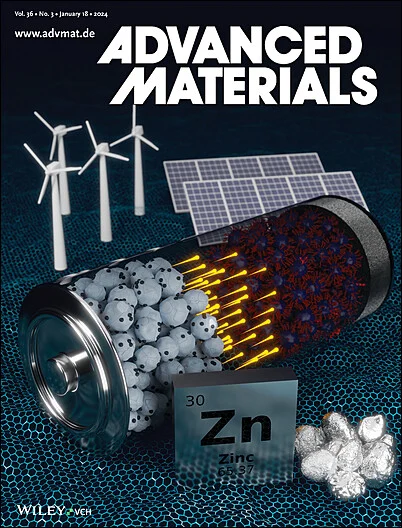Integrating PtCo Intermetallic with Highly Graphitized Carbon Toward Durable Oxygen Electroreduction in Proton Exchange Membrane Fuel Cells
IF 27.4
1区 材料科学
Q1 CHEMISTRY, MULTIDISCIPLINARY
引用次数: 0
Abstract
Exploiting robust and high‐efficiency electrocatalysts for sluggish oxygen reduction reaction (ORR) is essential for proton exchange membrane fuel cells (PEMFCs) toward long‐term operation for practical applications, yet remains challenging. Herein, the ordered PtCo intermetallic is reported with a Pt‐rich shell loaded on a highly graphitized carbon carrier (O‐PtCo@GCoNC) prepared by an impregnation annealing strategy. Systematic X‐ray spectroscopic, operando electrochemical techniques and theoretical calculations reveal that thanks to the synergistic interaction of the core–shell PtCo intermetallic structure with a tailor‐made Pt electronic configuration and highly graphitized carbon, O‐PtCo@GCoNC exhibits significantly enhanced activity and stability toward ORR. Crucially, O‐PtCo@GCoNC delivers a much‐enhanced mass activity of 0.83 A mg

求助全文
约1分钟内获得全文
求助全文
来源期刊

Advanced Materials
工程技术-材料科学:综合
CiteScore
43.00
自引率
4.10%
发文量
2182
审稿时长
2 months
期刊介绍:
Advanced Materials, one of the world's most prestigious journals and the foundation of the Advanced portfolio, is the home of choice for best-in-class materials science for more than 30 years. Following this fast-growing and interdisciplinary field, we are considering and publishing the most important discoveries on any and all materials from materials scientists, chemists, physicists, engineers as well as health and life scientists and bringing you the latest results and trends in modern materials-related research every week.
 求助内容:
求助内容: 应助结果提醒方式:
应助结果提醒方式:


